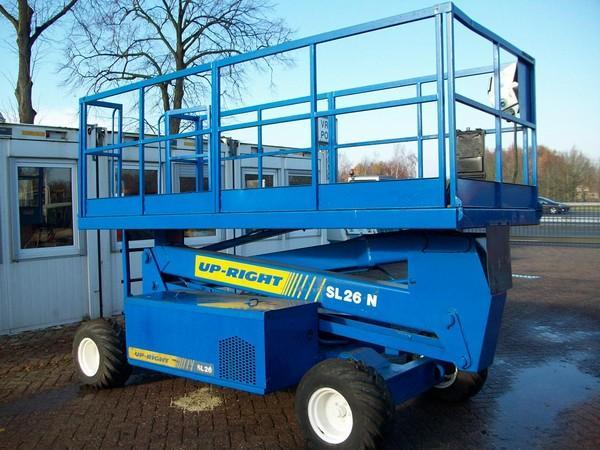There are many types of scissor lifts that can provide an elevated working platform and lift your equipment and loads. To effectively do this, they are specifically designed to suit the different operating environment. Hence the need to match the correct scissor lift with the right job.
A scissor lift consists of a platform which is raised to the air on a set of criss-cross support called a pantograph or scissor mechanism. The platform is hoisted or lowered as the scissor mechanism stretches or contracts.
Type of scissor lift and its suitable application
Generally, scissor lifts are classified based on one, the mechanism used to control the pantograph and two, the toughness of the lift.
We will have a look at each type of scissor lift in detail, and based on design features recommend the jobs it can be deployed for maximum effectiveness.
Classification based on the toughness of the Lift.
We have easy terrain lifts (electric scissor lift, battery scissor lift) and rough terrain scissor lift (hydraulic lift, diesel scissor lift).
The electric and battery are designed to operate on smooth and stable terrain. That explains why they are mostly used in indoors. They may be used outdoor but the terrain must be friendly.
Since the electric lift uses electricity, it is suited for indoor hoisting where it can easily be connected to power supply. The battery powered lift is more mobile and can be used outdoors provided the terrain is friendly.
More important too, these machines are less noisy and do not emit hazardous gases. Perfect for indoor work.
For all your in-house hoisting, transport and maintenance activities or even warehousing applications, the battery or electric powered scissor lifts are ideal.
The rough terrain lift is the quintessential beast. It is built to endure all the difficult terrain that make the electric and battery lifts shy away. It can endure rigorous work and adapt to different terrains.
Whether it is the construction site, field event set up and set down or your garden work (trimming and picking fruit), the rough terrain lift will sort you out.
Classification based on the Mechanism of control.
The pantograph is stretched and contracted by different mechanisms. The mechanism involved can be used to distinguish the type of scissor lift. For example:
Hydraulic scissor lifts
Pressurized hydraulics is responsible for the expansion and contraction that moves the platform up and down. The pressure can be generated by hand devices or by engines.
It’s very easy to use and can hoist very heavy weights. This is the perfect match for your heavy duty tasks whether indoors or outdoors. With the agility and maneuverability the hydraulic lift brings, the construction materials are transported and hoisted faster saving time, resources and energy.
It can also function well in warehouses where heavy loads are to be carried.
Diesel scissor lift.
The fuel powered lift are suited for outdoor work due to fumes emission. It’s agility and effectiveness is like that of the rough terrain scissor lift.
Pneumatic scissor lift.
The lift’s pantograph is powered by air pressure. Since it does not emit any fumes it can be used both indoors and outdoors. Not only is it easy to use but also easy to maintain since it does not have an engine and very few moving parts.
Mechanical scissor lift.
Screws and pinions are used to hoist and lower the platform. Its design only enables it withstand lighter weights hence not suitable for heavy duty tasks. It can be used indoors and outdoors.
Safety precaution
sAs harmless as it may look, scissor lifts can be a killing machine in the case of mishap. Accidents also result in loss of property, occasion delays and could make you fall out of trust with your workers. Therefore it’s important to adhere to strict safety precautions when using it.
Foremost, do not operate the lift without the prerequisite training. When you hire one, ask for a professional handler too. It may cost more but definitely not more than your life would.
In case you have experience with another lift, ascertain first whether it operates in a similar manner. A slight variation in vital controls could lead to costly mistakes.
More important, stick to the weight recommended for a given lift. These equipment are sensitive to weight and overloading could make it topple.
And before you begin working ensure the environment is clear. The danger of hitting something or even being electrocuted is real. Hanging electrical lines, a tree or wall may be dangerous. Preempt any of such so that you are working safe.
If you own one, ensure it is well maintained. If you are to hire one, ensure you hire from a reputable provider with quality and well maintained scissor lifts.
Florin A. is definitely a Digital Advertising professional and blog writer who loves to explore the most recent trends in business, technological know-how and advertising and creates about a variety of articles.



